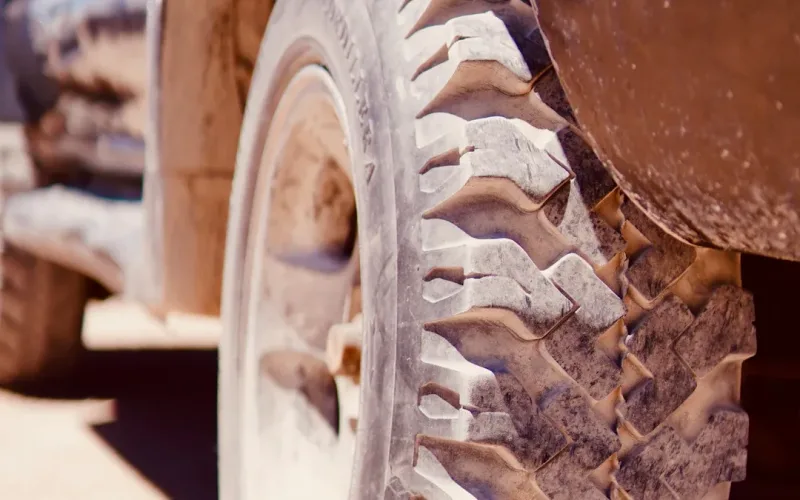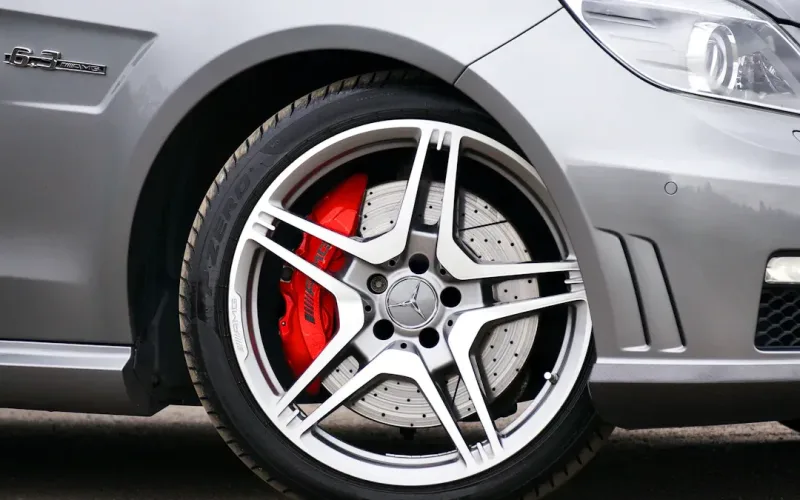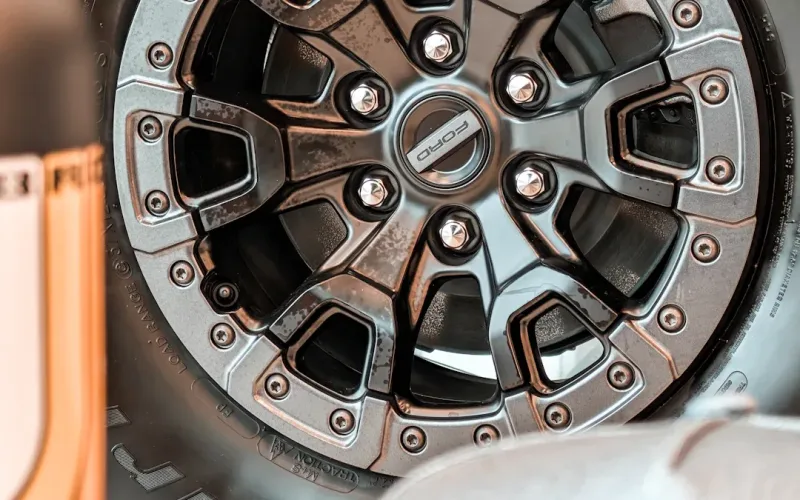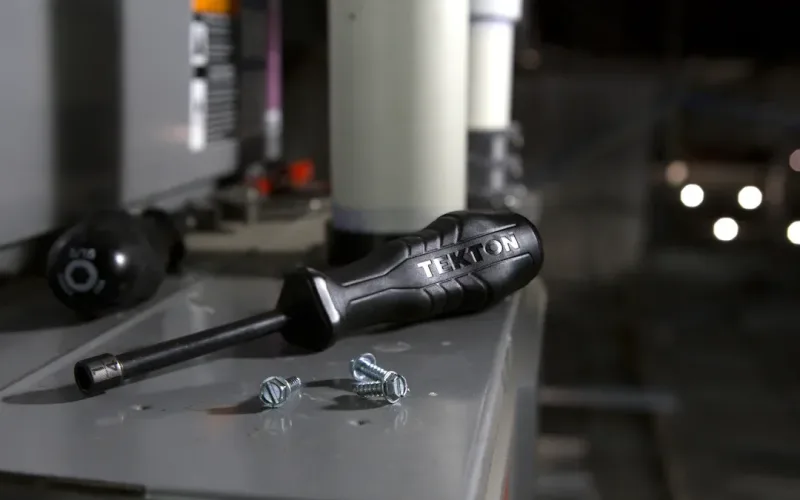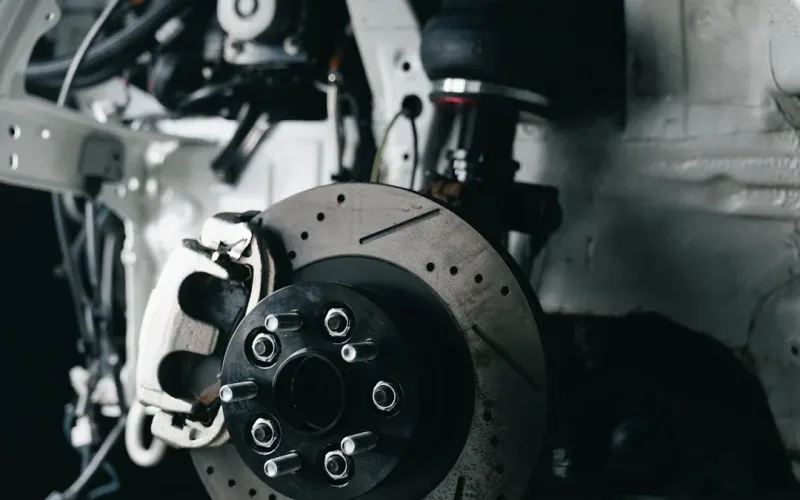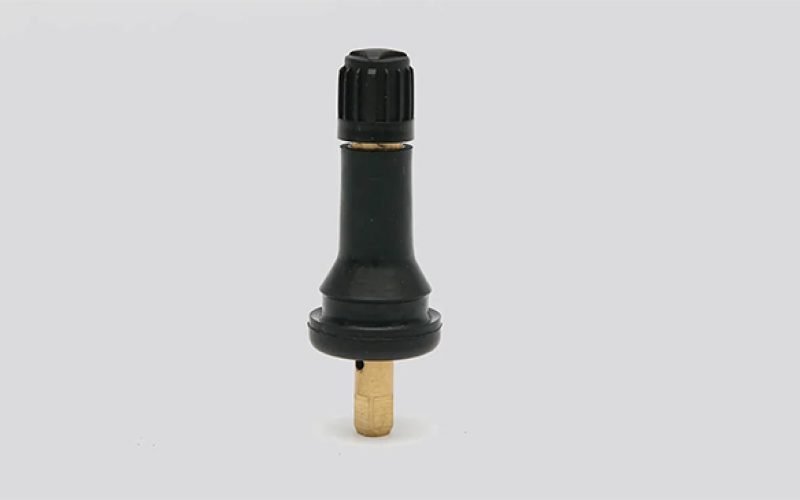

admin1
October 16, 2025
Wheel Balancing: Stick-On vs. Clip-On Weights for Alloy Rims
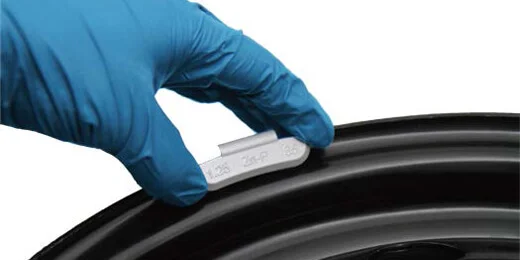
When it comes to alloy rims, drivers often find that adhesive wheel weights work best for protecting those shiny surfaces. Picking the right Wheel Weight can save rims from scratches and keep rides smooth. Steel clip-on wheel weights might suit Steel Rims, but those clips can bite into delicate alloys. Every driver wants their wheels to last and look sharp, so making the right choice matters for both performance and style.
Key Takeaways
Stick-on weights are ideal for alloy rims. They protect the rim’s finish and stay securely in place, even in tough conditions.
Clip-on weights can scratch alloy rims. They are better suited for steel rims, which can handle the rough treatment without damage.
Regular maintenance is crucial. Check wheel weights during oil changes to ensure they are secure and free from rust.
A clean wheel surface is essential for stick-on weights. Dirt and grease can cause them to fall off, so clean the rim thoroughly before installation.
Choosing high-quality weights matters. Imported weights resist rust better than local options, ensuring longer-lasting performance.
Stick-On vs. Clip-On Weights Overview
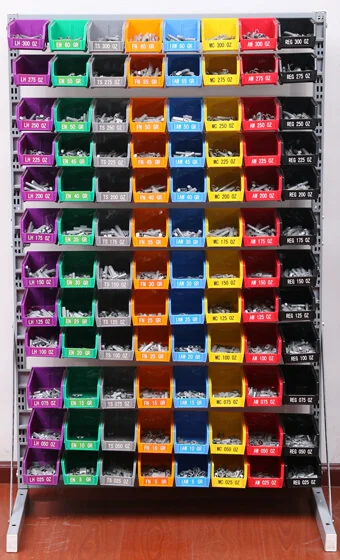
Main Differences Between Weight Types
Wheel weights come in two main types: stick-on and clip-on. Each type works in its own way to balance wheels. Stick-on weights use glue to stay on the wheel. Most stick-on weights are made from steel, so they last a long time. Clip-on weights grab the rim’s edge with a metal clip. They can be made from steel or other metals, but their clips can scratch the rim. Stick-on weights almost never scratch the wheel. Clip-on weights can leave small marks when you put them on or take them off. Stick-on weights are best for new alloy wheels. They spread weight evenly and fit special wheel shapes. Clip-on weights work well for steel rims, especially ones with deep edges. They do not work as well on low-profile alloy wheels and might cause harm.
Tip: Stick-on weights help alloy rims look nice. Clip-on weights can leave marks, so pick carefully!
Here’s a quick look at how these weights affect the environment:
Type of Wheel Weight | Environmental Impact | Materials Used | Corrosion Risk |
|---|---|---|---|
Stick-on | Good for the planet, lead-free, supports green goals | Zinc, Steel | Low chance of rust |
Clip-on | More likely to rust, not as green | Older materials | Higher chance of rust |
Now, makers use safer materials. Lead weights are not popular anymore, and many places have banned them. Zinc and steel are now the main choices for wheel weights.
Why Alloy Rims Need Special Care
Alloy rims are like the kings of wheels. They need extra care, especially for balancing. Their smooth surfaces and cool shapes make them easy to damage.
They must resist rust. Alloy rims need weights that pass salt spray tests for more than 96 hours.
The glue must be strong. Stick-on weights should hold with more than 3.5 N/mm².
Temperatures can change a lot. Weights must stay on from -40°C to 120°C.
They must not shake loose. Stick-on weights get tested at speeds up to 300 km/h.
The weight must be just right. Weights should be within ±0.1g of the right amount.
Good packaging keeps weights from rusting before use.
Specification Type | Details |
|---|---|
Compliance | Make sure weights meet rules like SAE J757 or ISO 19499. |
Weight Design | Use clip-on for steel wheels, stick-on for alloys. |
Weight Increments | Should match balancer steps, usually 5g each. |
Alloy rims also use new tech. Machines and software help put weights in the right spot. Some rim shapes, like deep flanges, decide which weight fits best.
Stick-on weights can have problems sometimes. Here’s a table of common issues and fixes:
Common Issues | Causes | Solutions |
|---|---|---|
Poor Adhesion | – The wheel is dirty | – Clean the wheel well |
– Bad glue | – Use good adhesive | |
– Wrong way to install | – Follow the right steps | |
Weights Falling Off | – Big temperature changes | – Use glue that can handle heat |
– Driving very fast | – Make sure the weight is put on right | |
– Not using weights right | – Check and replace loose weights | |
Unbalanced Wheels | – Wrong size or spot for the weight | – Use the right size for your wheels |
– The weight moves or falls off | – Rebalance the wheels often | |
– Fix the weight so it does not move |
Alloy rims look great and work well if you take care of them. Stick-on weights help keep them looking good. Clip-on weights are better for steel rims, which can handle more rough use.
Installation and Compatibility with Alloy Rims
Installing Stick-On Weights on Alloy Wheels
Stick-on weights love a clean surface. The installer grabs a paper towel and some lacquer thinner, then scrubs the inside of the wheel barrel until it shines. Windex comes next, wiping away any leftover mounting lube. The wheel gets another round of lacquer thinner for good measure. The installer cuts a rectangle with rounded corners from the lead tape, then taps it gently with a ballpein hammer. The weight hugs the curve of the rim like a sticker on a skateboard. A final piece of tape covers the weight, burnished down so it sticks tight.
Here’s how the process unfolds:
Clean the wheel barrel with lacquer thinner and a paper towel.
Wipe the wheel with Windex to remove dried mounting lube.
Use lacquer thinner again for a spotless finish.
Tap the lead tape weights with a ballpein hammer for a snug fit.
Cut and apply a rectangle of tape over the weights, burnishing it down.
This method takes a little extra time. The adhesive needs a clean surface and a moment to cure. The installer works with care, making sure the weight stays put even when the car hits a pothole or a speed bump.
Pro Tip: A clean wheel means a happy stick-on weight. Dirt and grease make weights fall off faster than a dropped ice cream cone.
Clip-On Weights and Alloy Rim Issues
Clip-on weights snap onto the rim with a satisfying click. They work on many wheel types, including alloy rims. The installer finishes the job quickly, using a clamp to secure the weight. No waiting for glue to dry.
Clip-on weights fit a variety of wheels.
They adapt to different vehicles.
No major compatibility problems appear with modern alloy rims.
However, the installer knows that clip-on weights can leave tiny marks on delicate alloys. Steel Rims handle clip-ons like a champ, but alloy rims sometimes show battle scars after installation. Stick-on weights offer a gentler touch for those who want their wheels to look flawless.
Steel Rims vs. Alloy Rims Durability
Steel Rims Longevity and Benefits
Steel Rims have a reputation for toughness. They laugh in the face of potholes and keep rolling when the road gets rough. Many drivers pick them for their long life and easy repairs. BRS Steel Rims take this to the next level. These wheels are built for adventure, whether on city streets or muddy trails. They come in all shapes and sizes, ready for trucks, trailers, ATVs, and cars.
BRS Steel Rims stand out because they are:
Designed for superior durability and repairability.
Tough enough for rugged conditions.
Easy to fix if bent—just a little hammering, and they are back in shape.
Available in styles like modular and Daytona, with finishes that fight off rust.
When it comes to cost, Steel Rims win again. The initial price is friendly to wallets, and repairs rarely break the bank. Most drivers can expect up to 10 years or more from a set. Some even see their wheels last longer with a bit of care.
Here’s a quick look at how long these wheels stick around:
Rim Type | Average Lifespan |
|---|---|
Steel Rims | Up to 10 years or more |
Aluminum Alloy Rims | Around 5 to 7 years |
BRS Steel Rims also shine in the repair shop. If a rim bends, a mechanic can usually fix it. Cracked alloy rims, on the other hand, often end up in the scrap pile. Truckers and off-roaders love Steel Rims for this reason. They know a little damage won’t end the journey.
Note: Steel Rims may need a fresh coat of paint now and then, but the cost stays low compared to fancy alloys.
Alloy Rims Durability Concerns
Alloy rims look sharp and feel light. They help cars handle better and save a bit of gas. But these wheels have a softer side. They do not like curbs, potholes, or salty roads. A hard hit can crack an alloy rim, and fixing cracks is tricky. Most shops recommend replacing the whole wheel.
Here are the top ways alloy rims get damaged:
Curb scrapes leave scratches and cuts.
Potholes and road debris can crack or bend the rim.
Deicer chemicals and harsh cleaners cause corrosion.
Brake dust builds up and eats away at the finish.
Driving on a flat tire rubs the rim and causes more scratches.
Alloy rims usually last about 5 to 7 years. They need gentle cleaning and special care to keep their shine. Repairs cost more, and sometimes the only fix is a new rim. In salty or wet places, corrosion can sneak in and shorten their life even more.
Maintenance for alloy rims can get expensive. Owners must use the right cleaners to avoid ruining the finish. If corrosion sets in, repairs get complicated. Steel Rims, on the other hand, need less fuss. A little rust might show up, but a quick sandblast and paint job can make them look new again. Many drivers and trucking companies find it cheaper to replace Steel Rims than to fix up old alloy wheels.
Tip: For drivers who want wheels that last, Steel Rims offer a smart, cost-effective choice. BRS Steel Rims, with their strong build and easy repairs, make every mile count.
Rim Appearance and Damage Risks
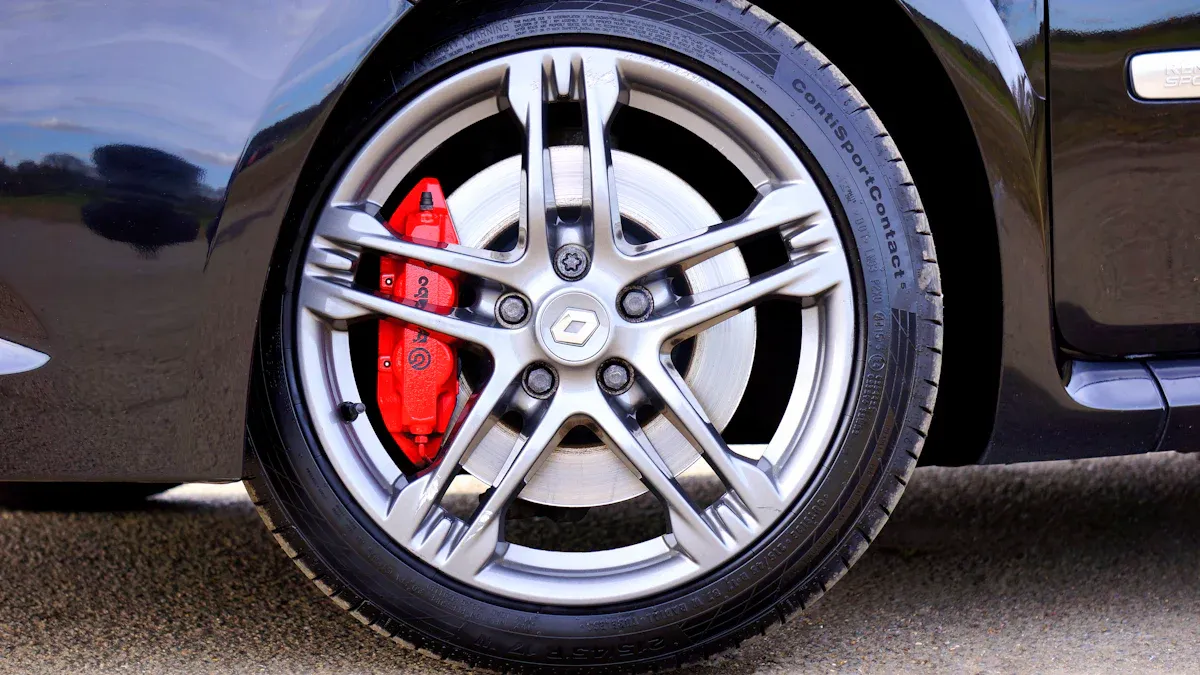
Clip-On Weights and Rim Damage
Clip-on weights might look tough, but they can act like tiny bullies on alloy rims. Every time a technician snaps one onto a shiny wheel, the rim holds its breath. Sometimes, the metal clip leaves a mark or even a small nick. These little scars add up, especially if the technician rushes or uses too much force. Some shops try to use coated weights to soften the blow, but results depend on how careful the installer feels that day.
Many alloy wheels do not have the right lip for clip-on weights. When someone tries to force a clip-on onto a rim that does not fit, trouble follows. The rim can bend, scratch, or even chip. Here are the most common problems drivers see with clip-on weights on alloy rims:
Marking or knicking of the rim’s edge
Scratches from improper installation
Damage when the rim lacks a proper lip for the clip
Coated weights help, but only if applied with care
Steel Rims, on the other hand, shrug off these marks. They love a good challenge and rarely show battle scars from clip-on weights.
Note: Alloy rims want to stay pretty. Clip-on weights sometimes have other plans.
Stick-On Weights and Visual Impact
Stick-on weights bring a modern twist to wheel balancing. They stick to the inside of the rim, hiding from view like a ninja in the night. Most drivers never notice them. These weights blend with the wheel’s surface, keeping the rim’s style front and center. Over time, stick-on weights keep alloy rims looking sharp and clean.
Stick-on weights offer a sleek, modern solution for balancing.
They blend seamlessly with the wheel, giving a cleaner look.
Their low-profile design makes them almost invisible.
The rim’s appearance stays fresh, even after years on the road.
Drivers who care about style pick stick-on weights for their alloy rims. The wheels stay smooth, shiny, and free from ugly marks.
Tip: For a flawless finish, stick-on weights win the beauty contest every time.
Maintenance and Weight Removal
Caring for Alloy Rims with Weights
Alloy rims love attention. Drivers who want their wheels to shine and last need to treat them like royalty. Stick-on weights sometimes lose their grip when the weather gets wild. Clip-on weights might rust if they miss a protective coat. Smart drivers check their wheels often and keep them clean. A dirty rim can turn into a rusty mess faster than a pizza disappears at a party.
Here’s a table that shows how to keep alloy rims happy:
Maintenance Practice | Description |
|---|---|
Regular Inspections | Check weights often. Make sure they stick tight and show no rust or wear. |
Clean the Wheels | Wash rims with gentle soap. Remove brake dust and road grime. |
Rotate Tires Regularly | Swap tires around. This helps weights wear evenly and last longer. |
Drivers who use stick-on weights need to watch for peeling or sliding. Extreme heat or cold can make the glue weak. Clip-on weights need a quick look for rust, especially after rainy days. A soft brush and mild cleaner work wonders. Wheels sparkle, and weights stay put.
Tip: A clean rim is a happy rim. Dirt and salt love to hide in tiny cracks. Wash wheels every month for best results.
Removing Weights Safely
Removing wheel weights sounds easy, but it takes skill. Stick-on weights act like stubborn stickers. Clip-on weights snap off with a little muscle. The wrong move can scratch a rim or leave ugly marks. Technicians use special tools and gentle hands.
Here’s how they do it:
Heat the stick-on weight with a hair dryer. The glue softens and lets go.
Pry the weight off slowly with a plastic scraper. Metal tools can scratch the rim.
Wipe away leftover glue with adhesive remover. Rims look fresh again.
For clip-on weights, use pliers with padded tips. Squeeze and twist gently.
Check the rim for scratches. Buff out any marks with a soft cloth.
Drivers who rush the job end up with scars on their wheels. Patience pays off. Wheels stay smooth, and weights come off clean.
Note: Never yank a weight off in a hurry. Alloy rims bruise easily. Take it slow, and let the tools do the work.
Expert Advice and User Experiences
Professional Recommendations for Alloy Rims
Automotive experts love to share their secrets. They gather in workshops, swap stories, and debate the best way to balance wheels. Most agree that stick-on weights win the prize for alloy rims. These weights stick like glue and rarely fall off, even when the road gets bumpy. Clip-on weights, on the other hand, often get a thumbs-down. Experts say they work best for one-time use. If someone tries to reuse them, the weight might slip off, causing vibrations that make drivers grumble.
Here’s what the pros say in a handy table:
Weight Type | Recommendation | Reasoning |
|---|---|---|
Stick-on weights | Recommended for alloy rims | Reliable, stay put, protect rim finish |
Clip-on weights | Not recommended for reuse | May fall off, cause wheel imbalance |
Quality weights | Use high-quality imported brands | Local weights rust, imported ones last longer |
One expert, Joe from a busy tire shop, jokes, “Stick-on weights are like duct tape for wheels. They fix problems and keep things quiet.” He always chooses imported weights for his customers, because they resist rust and keep wheels spinning smoothly.
Common Issues and Solutions
Drivers face plenty of wheel weight troubles. Sometimes a weight falls off during a wild ride. Other times, a clip-on weight rattles loose and makes the steering wheel shake. Alloy rims need gentle care, so stick-on weights help avoid scratches and dents.
Here’s a quick list of common problems and how drivers solve them:
Weights fall off after hitting potholes.
Solution: Clean the rim before installing and use strong adhesive.Clip-on weights cause rim scratches.
Solution: Switch to stick-on weights for alloy rims.Cheap weights rust and stain the rim.
Solution: Pick high-quality imported weights.Wheels vibrate at high speeds.
Solution: Rebalance with proper weights and check for loose ones.
One driver shared his story about switching from clip-on to stick-on weights. He noticed his alloy rims stayed shiny and smooth, even after months of driving. Another driver with Steel Rims laughed about how his wheels shrugged off clip-on marks and kept rolling.
Tip: Always ask the technician which weight works best for your wheels. Happy wheels mean happy rides! 🚗
Stick-on weights take the crown for alloy rims. They hide out of sight, protect the rim’s shine, and stay put through wild weather. Check out the main findings:
Weight Type | Advantages | Compatibility |
|---|---|---|
Stick-on weights | Hidden, durable, great for tough conditions | Perfect for alloy rims |
Clip-on weights | Quick to install, strong balance | Best for steel wheels |
Drivers love stick-on weights because they keep rims looking sharp and cut down on repairs. For those who want wheels that last, BRS Steel Rims bring unbeatable durability, wallet-friendly prices, and power through rough roads. Every driver should chat with a pro and pick the best fit for their ride and style. 🚗
FAQ
Can stick-on weights fall off in hot weather?
Sticky glue loves heat, but sometimes it gets too cozy and lets go. Drivers who park in the sun might spot a weight sliding down the rim. A clean wheel and strong adhesive keep those weights stuck like bubblegum on a shoe.
Do clip-on weights damage alloy rims?
Clip-on weights act tough. They sometimes leave tiny scratches or dents on shiny alloy rims. Technicians who rush the job make things worse. Stick-on weights play nice and keep rims looking fresh.
How often should wheel weights get checked?
Smart drivers peek at their wheel weights every oil change. Mechanics look for loose, rusty, or missing weights. Regular checks keep rides smooth and wheels happy.
Tip: A quick glance saves a trip to the repair shop!
Are steel rims better for off-road adventures?
Steel rims laugh at rocks and mud. BRS Steel Rims handle wild trails with style. Off-roaders pick steel for strength, easy repairs, and wallet-friendly prices. Alloy rims prefer city streets and gentle drives.
